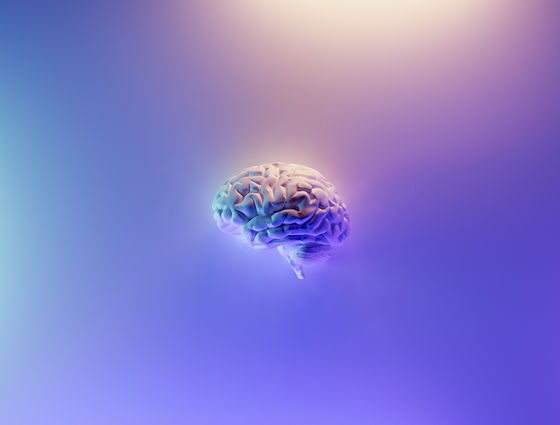Successful first experiment to repair brain damage in rats with human ``mini brain''

For the first time, a miniature model of the human brain, a '
Structural and functional integration of human forebrain organoids with the injured adult rat visual system: Cell Stem Cell
https://www.cell.com/cell-stem-cell/fulltext/S1934-5909(23)00004-8
Rat brain injuries 'plugged' with lab-grown human minibrains in world-first experiment | Live Science
https://www.livescience.com/human-organoids-repair-rat-brains
The challenge of transplanting brain organoids into rat brains was the research team of Han Xiao Isaac Chen, an assistant professor of neurosurgery at the University of Pennsylvania Perelman School of Medicine. The experimental results were published on February 2, 2023 in the scientific journal Cell Stem Cell , which focuses on stem cell research, and succeeded in transplanting brain organoids grown from human stem cells into the visual cortex of rats. doing.

When light hits the retina of the eye, an electrical message is transmitted to the 'primary' visual cortex, which begins to analyze the basic features of what is in front of the eye. This data will be transferred to the 'secondary' visual cortex for further analysis. In a study led by Cheng et al., researchers transplanted brain organoids into adult rats with severe damage to the secondary visual cortex.
In previous studies, scientists have transplanted individual brain cells into healthy rodents of various ages, but transplantation of brain organoids has been limited to very young, uninjured rodents. I was. However, because this experiment transplants brain organoids into aged and injured rats, ``this study represents a new step in using brain organoids to repair brain damage,'' Chen said. I spoke.
The research team is culturing brain organoids from a type of human stem cell that can give rise to different types of cells. Over the course of 80 days, the researchers used scientific cues to induce stem cells to generate three-dimensional clusters containing many types of cells found in the human
``This structure we found in brain organoids is very important in defining how the brain actually works,'' Chen said. But while the brain organoids resemble the real cortex in many ways, Chen says, 'it's by no means a perfect copy.'
The research team removed a portion of the skull from a rat with severe damage to the secondary visual cortex, implanted brain organoids into the brain, and sealed the open skull with a protective cap. During and after surgery, the rats were administered an immunosuppressant, which seems to have succeeded in suppressing rejection. Three months after the surgery, the transplanted brain organoids infiltrated the rat's blood vessels, confirming that the brain organoids and the remaining visual processing system in the rat's brain were physically entwined. The research team confirmed that the brain organoids are well connected to the rat retina by using a fluorescent tracer. In fact, when rats were given visual stimuli such as flashing lights, it was confirmed that transplanted brain organoids were activated like normal visual cortex.

However, the research team did not conduct more detailed tests on visual acuity and activity, and did not investigate how the rat's visual ability changed after injury or transplant surgery. In the future, the researchers plan to test whether brain organoids can be implanted in other parts of the brain, such as the motor cortex, which controls movement, and study the factors that control the speed and extent of their integration.
``I think it's the first step in developing new strategies to repair the brain,'' said Chen. In addition, Assistant Professor Chen told Live Science, a scientific media, that transplantation of brain organoids could eventually be useful in treating ``brain trauma'', ``brain function after stroke'', and ``neurodegenerative diseases such as Parkinson's disease''. I said I have sex. However, it is believed that it will still be 'years away' before transplantation of brain organoids can be applied to humans.
Related Posts:
in Science, Posted by logu_ii







